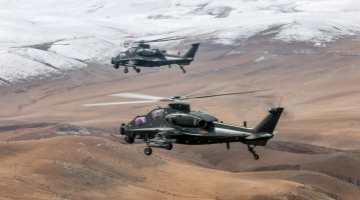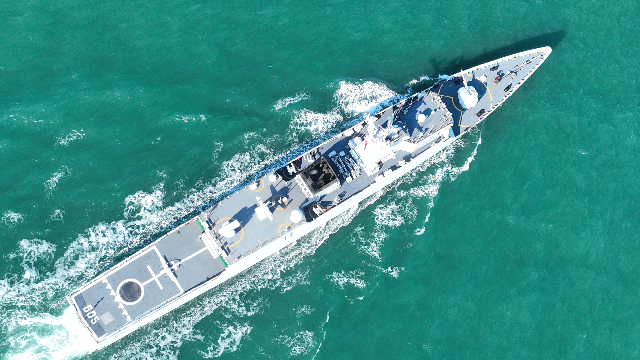By Xu Juanjuan and Huang Jiayu
The helicopter destroyer JS Kaga of the Japan Maritime Self-Defense Force (JMSDF) recently completed over a month of sea trials at the US Naval Base San Diego. The trials primarily focused on testing the vertical landing and short takeoff capabilities of US F-35B fighter jets on the JS Kaga. The inspection of the results of the first phase of the aircraft carrier modifications means that Japan is one step closer to the goal of truly owning an aircraft carrier. This also highlights the deepening military collusion between Japan and the US.
As Japan develops its offensive capabilities, the US has not only loosened policy restrictions but also provided considerable support to it. Previously, the US and Japan agreed on a contract for the sale of 42 F-35B fighter jets to Japan by 2025. In January this year, the US and Japan officially signed a contract, and Japan will obtain about 400 Tomahawk cruise missiles from the US between fiscal years 2025 and 2027. Furthermore, the US has approved the domestic production of Patriot air defense missiles in Japan and is collaborating with Japan to develop unmanned wingman drones and advanced missiles capable of intercepting hypersonic weapons.
In addition to weapons and equipment, the US and Japan are strengthening collusion in organizational restructuring, interoperability of equipment, and joint military exercises. Japan is the US' most important ally in East Asia and a pawn in advancing the US "Indo-Pacific strategy" and engaging in Asia-Pacific affairs. In April this year, the US and Japan reached a series of agreements aimed at enhancing defense and security cooperation and completed the most substantial upgrade to the Treaty of Mutual Cooperation and Security between Japan and the United States of America in over 60 years, which further deepened interdependence and collusion between the two sides. Japan plans to establish a new Japan Self-Defense Forces (JSDF) Joint Operations Command (JJOC) by the end of the year to centralize command of its land, sea, and air self-defense forces, while coordinating directly with the US Forces Japan (USFJ) command for direct coordination and information sharing. Both the reforms of the JSDF and the JS Kaga's sea trials are intended to enhance the interoperability of US and Japanese equipment and improve the integrated operational capabilities of their forces.
The wanton indulgence from the US has fueled Japan's ambition to actively expand its military. In recent years, Japan has continuously promoted the implementation of the "US-Japan+" military cooperation model to bind the military cooperation relationship between the US, Japan and third parties, and has been active in joining AUKUS and strengthening cooperation with the Five Eyes Alliance. This year, the JMSDF sent a special security unit overseas for the first time and dispatched a fleet of ships to the Pacific and Indian Oceans for a seven-month deployment. The positioning of the JSDF is gradually becoming more aggressive from an auxiliary role of providing logistical support to the US. Under such circumstances, the possibility of the US and Japan jointly intervening in hot issues in the Asia-Pacific region is also increasing.
Japan continues to claim that its military expansion is purely defensive. However, Japan's dangerous actions to strengthen its offensive power with the support of the US seriously deviate from its pacifist constitution and continuously undermine the exclusively defense-oriented policy. This is bound to have a serious impact on regional and even global security situations and warrants heightened attention and vigilance from the international community.
(The authors are from the PLA Academy of Military Sciences.)













